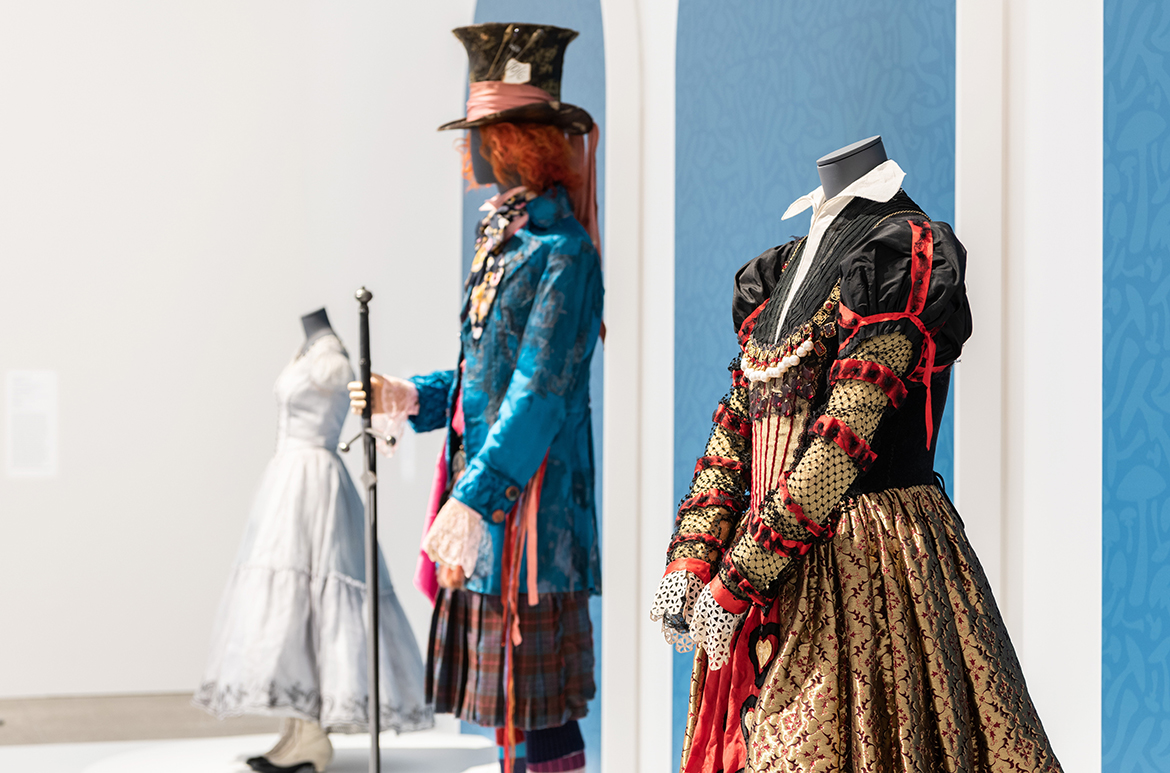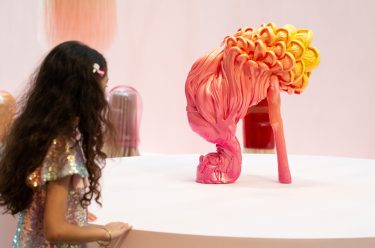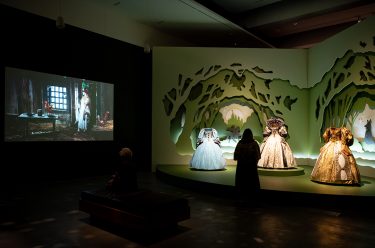Fairy tales of the nineteenth and twentieth centuries took a new focus on ‘home’ as a place of relative stability. Protagonists such as Alice in Alice’s Adventures in Wonderland or Dorothy in The Wonderful Wizard of Oz seek a return from strange and troubling parallel worlds to the familiarity and safety of their former lives.
In the classic film The Wizard of Oz (1939), Dorothy, played by Judy Garland, clicks her red heels together three times and repeats the phrase ‘There’s no place like home’ to transport herself and her dog Toto from the Land of Oz back home to her life in Kansas.
The Wizard of Oz (1939)
Alice and Dorothy’s journeys explore disorientation, theatricality and the wonders of the childhood imagination. The characters have also become reassuring stand-ins for those experiencing real-world challenges such as psychological, physical or political experiences of loss and displacement.
Buy Tickets to ‘Fairy Tales’
Until 28 April 2024
Gallery of Modern Art, Brisbane
The ‘Fairy Tales’ exhibition unfolds across three themed chapters. ‘Into the Woods’ explores the conventions and characters of traditional fairy tales alongside their contemporary retellings. ‘Through the Looking Glass’ presents newer tales of parallel worlds that are filled with unexpected ideas and paths. ‘Ever After’ brings together classic and current tales to celebrate aspirations, challenge convention and forge new directions.
Travel with us in our weekly series through each room and theme of the ‘Fairy Tales’ exhibition at Brisbane’s Gallery of Modern Art (GOMA) as we explore some of the works on display.
DELVE DEEPER: Journey through the ‘Fairy Tales’ exhibition with our weekly series
EXHIBITION THEME: 10 Through the Looking Glass
Charles Blackman
Charles Blackman first encountered Alice’s Adventures in Wonderland (1865) and its sequel Through the Looking-Glass, and What Alice Found There (1872) through his wife Barbara, a writer and poet whose progressive blindness led her to listen to recordings of the stories read by BBC announcer Robin Holmes. Inspired by the visual imagery produced by Carroll’s whimsical wordplay (rather than the book’s famous illustrations by John Tenniel, which the artist had not seen), Blackman began to draw parallels between Alice’s nonsensical and unpredictable encounters and the real-world challenges he and his wife faced as a young couple. In addition to Barbara’s failing eyesight, an impending baby and changes in their financial circumstances influenced the development of Blackman’s series of 41 paintings.
Shown in ‘Fairy Tales’ are three works from the series: The Blue Alice 1956 (illustrated), which sees Alice (Barbara) and the White Rabbit (Blackman) being wed by the story’s Dormouse; Feet beneath the table 1956 (illustrated), which depicts a pregnant Barbara surrounded by cups and a teapot (in the vein of the ‘Mad Tea-Party’), melded with objects from Blackman’s working life as a short‑order cook; while Drink Me 1956 (illustrated) draws a wry parallel between Alice’s encounters with liquids and the medicines prescribed to Barbara for pregnancy-related heartburn. The integration of the Blackmans’ personal experiences with those of Alice offers a whimsical transformation of the tale from fiction to reality.
Charles Blackman ‘The Blue Alice‘ 1956-57
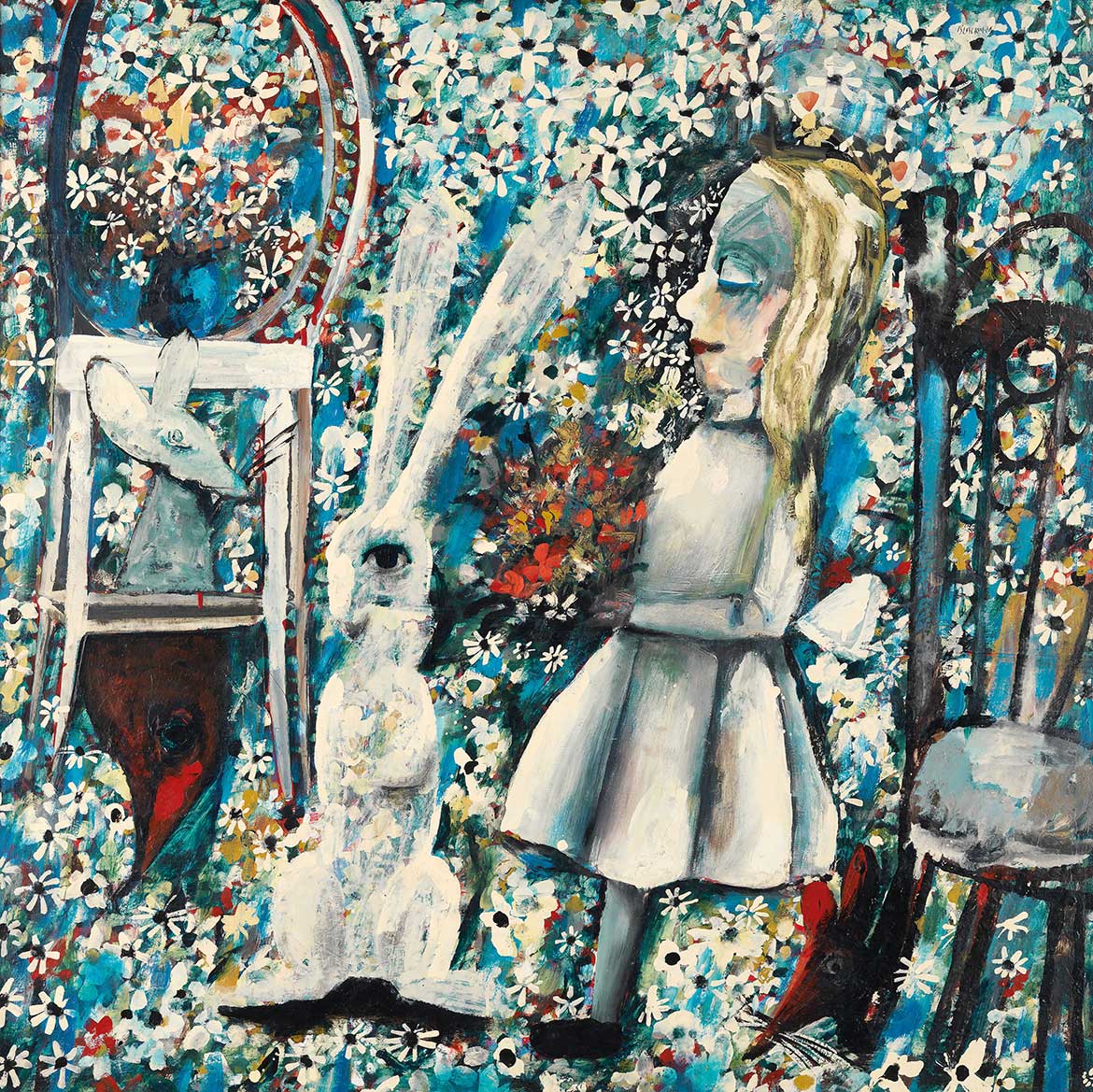
Charles Blackman ‘Feet beneath the table’ 1956
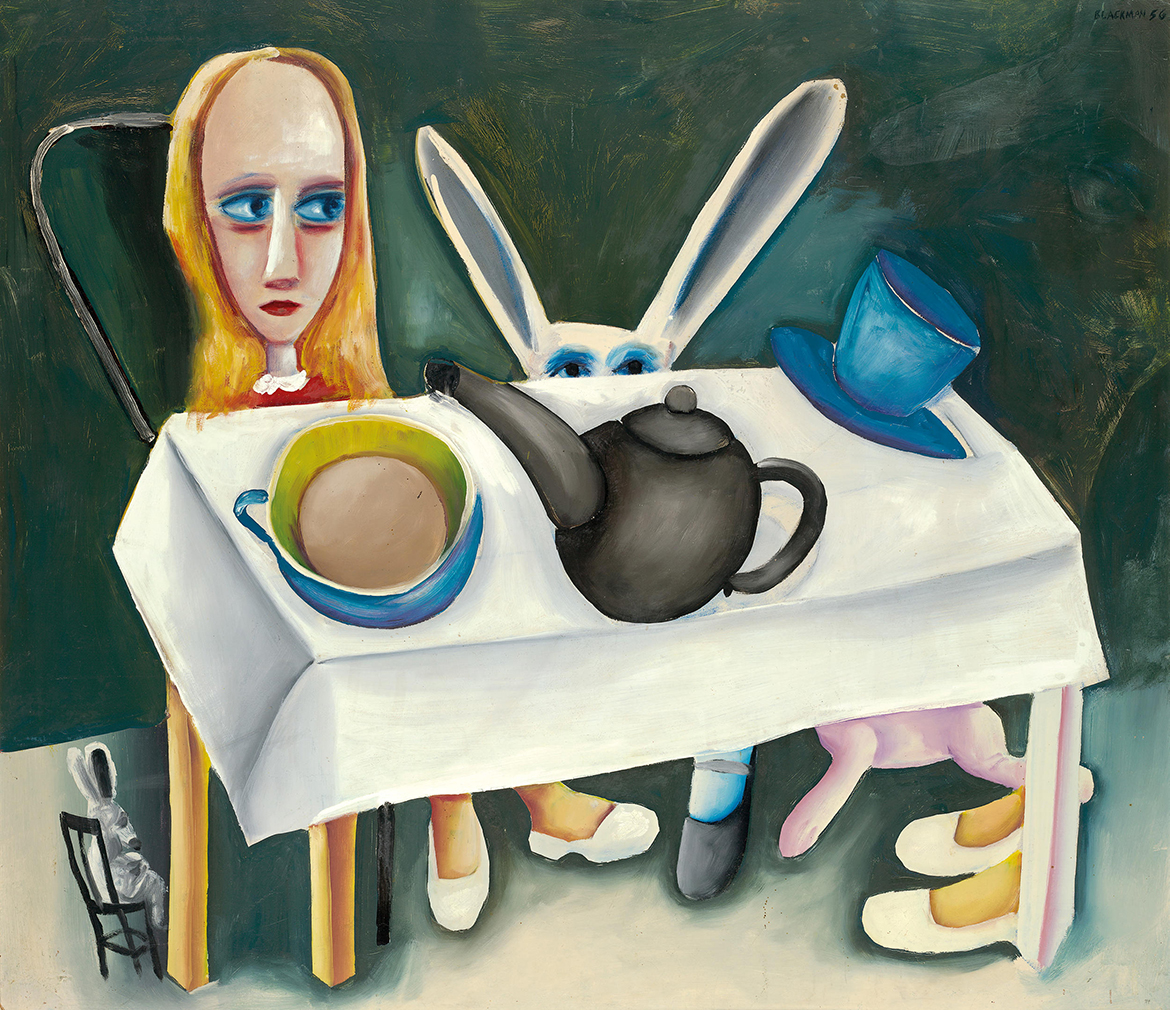
Charles Blackman ‘Drink Me’ 1956
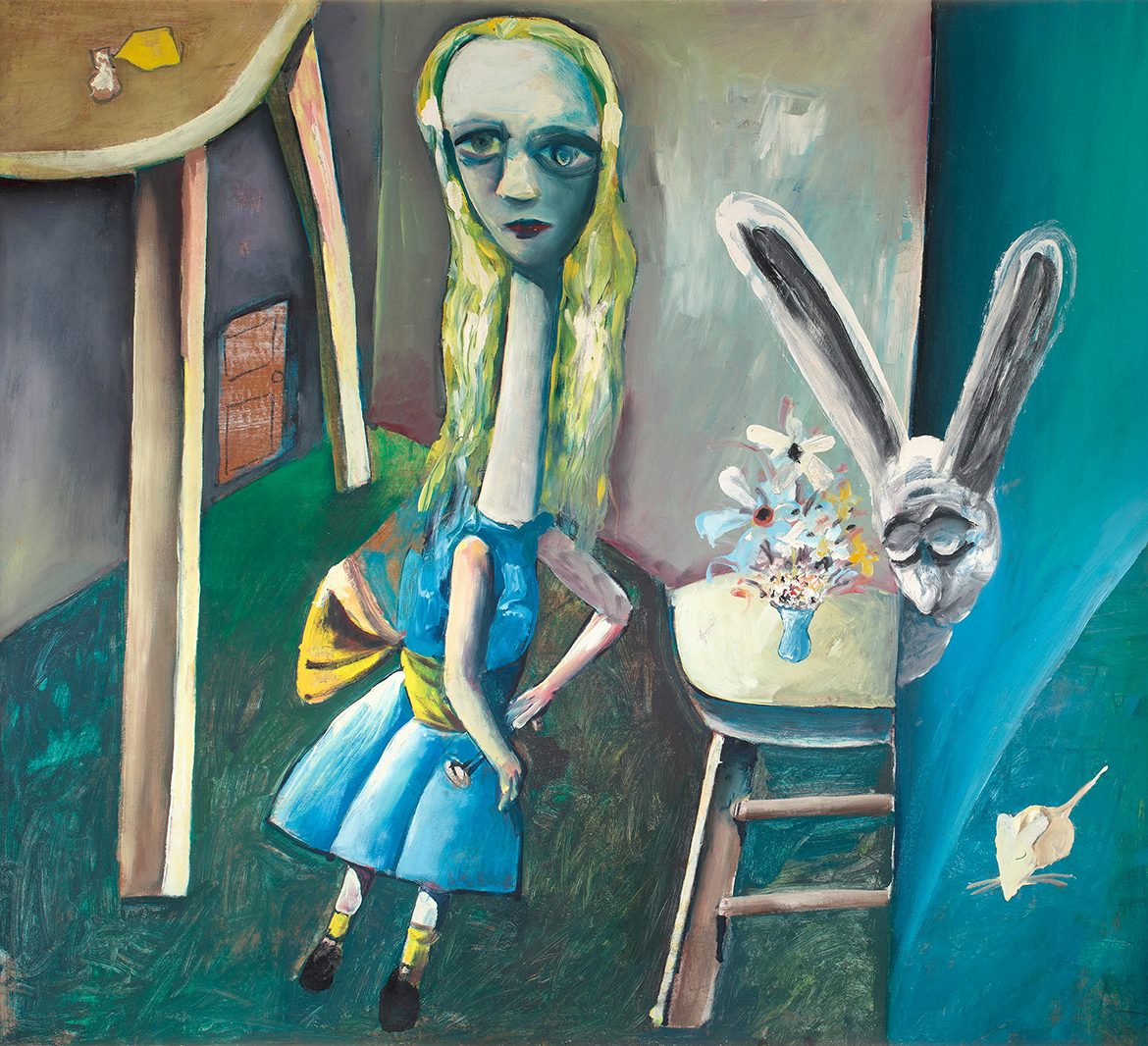
Tim Burton (director) ‘Alice in Wonderland’ (2010)
Now over 150 years old, Lewis Carroll’s Alice’s Adventures in Wonderland continues to capture the imagination across artforms from fine art to performance and film. In the 2010 film Alice in Wonderland, directed by Tim Burton, we see Alice all grown up. In this rendition of the tale, she is now 19 years old and on the cusp of an engagement when she follows the White Rabbit down the rabbit hole. While still disorientated by her plunge into a new world, Burton’s Alice is more assured than the young child of Carroll’s book, and while personal growth and self-discovery are still part of the journey, Alice’s tale is now one of an empowered and independent heroine. Burton is known for his darkly whimsical directorial style and celebrated for his many films that subvert traditional fairy-tale tropes by offering a macabre spin on ideas of love, marriage and convention.
In ‘Fairy Tales’, we bring together three key costumes from his Alice in Wonderland — those of Alice, the Mad Hatter and the Red Queen (illustrated) — designed by Academy Award-winner Colleen Atwood.
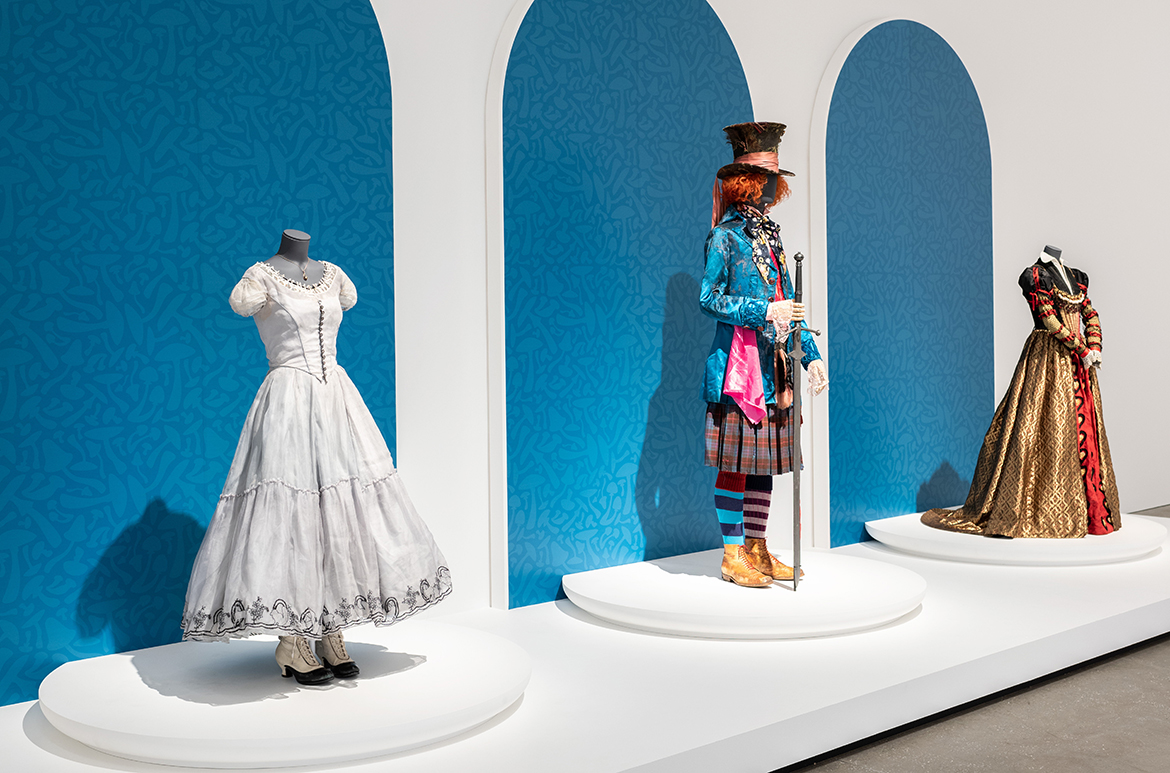

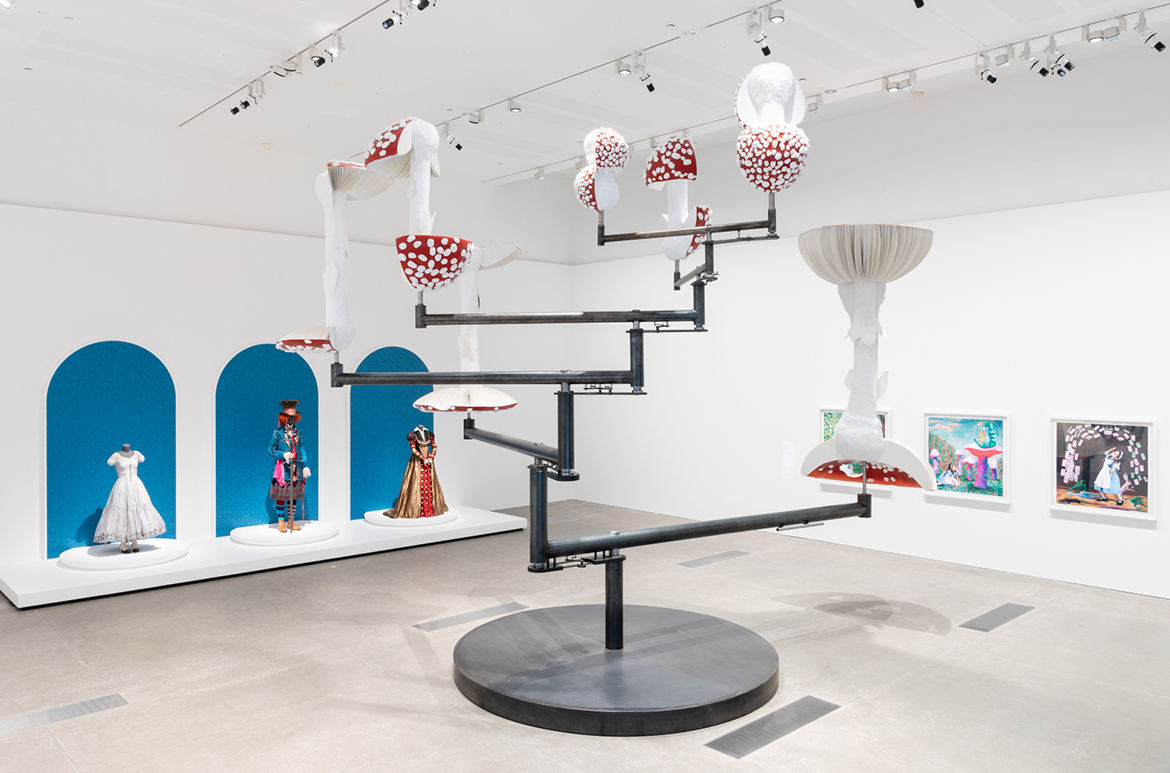
The ‘Fairy Tales’ exhibition is at Brisbane’s Gallery of Modern Art (GOMA), Australia from 2 December 2023 until 28 April 2024.
‘Fairy Tales Cinema: Truth, Power and Enchantment‘ presented in conjunction with GOMA’s blockbuster summer exhibition screens at the Australian Cinémathèque, GOMA from 2 December 2023 until 28 April 2024.
The major publication ‘Fairy Tales in Art and Film’ available at the QAGOMA Store and online explores how fairy tales have held our fascination for centuries through art and culture.
From gift ideas, treats just for you or the exhibition publication, visit the ‘Fairy Tales’ exhibition shop at GOMA or online.

#QAGOMA
